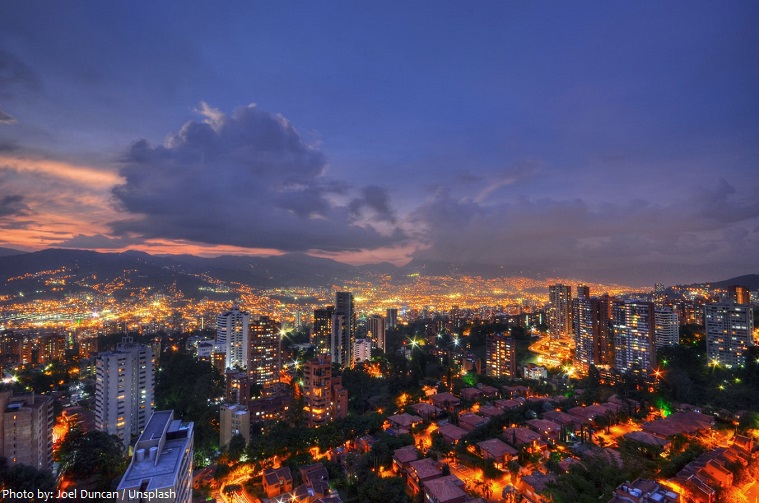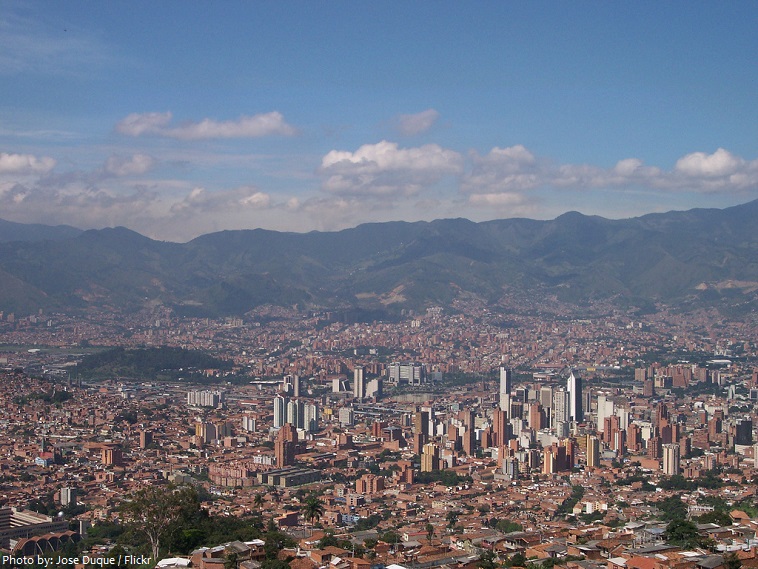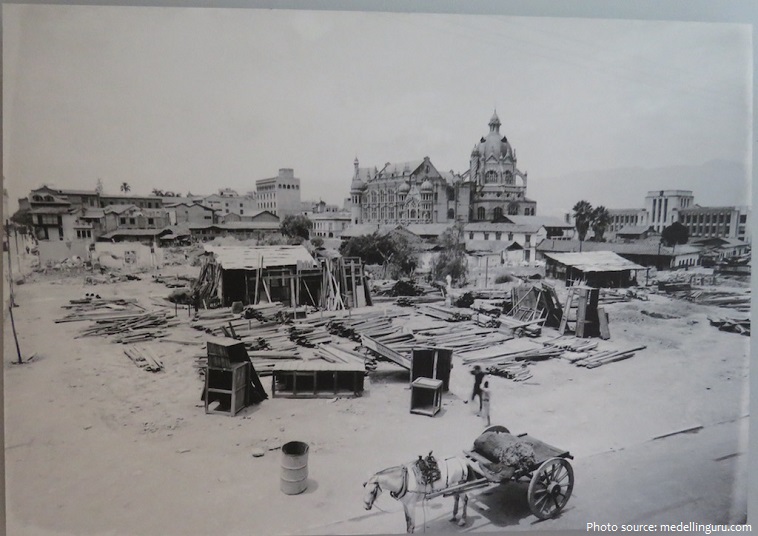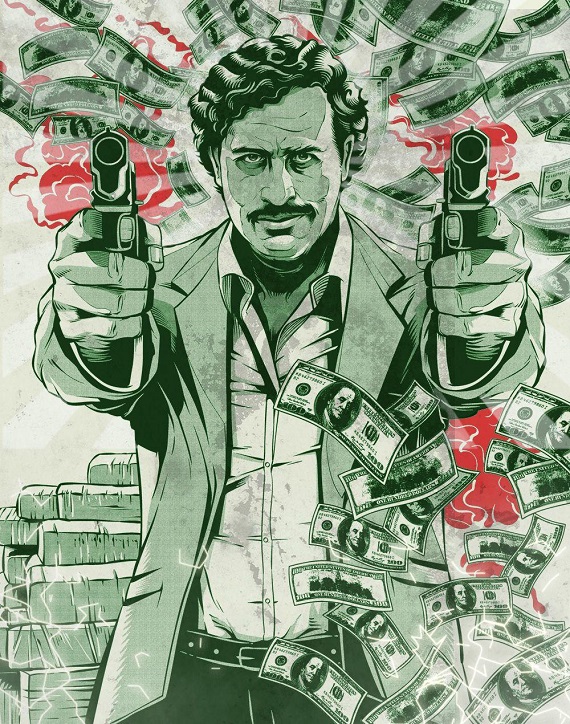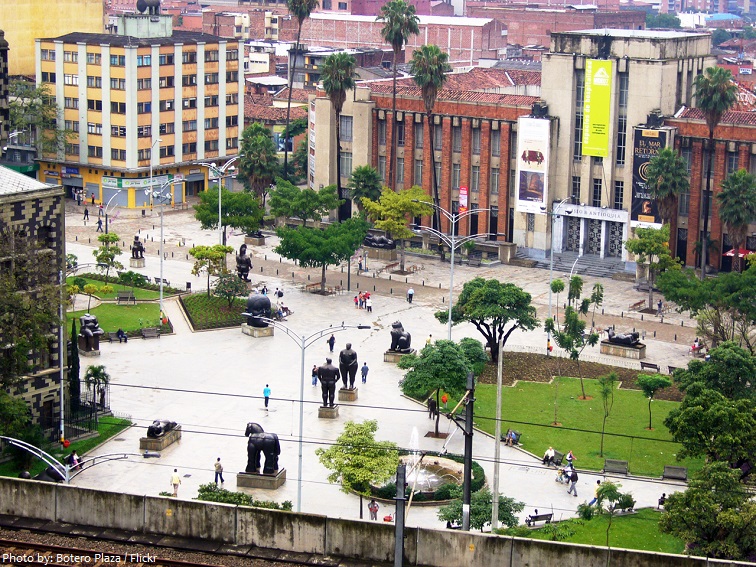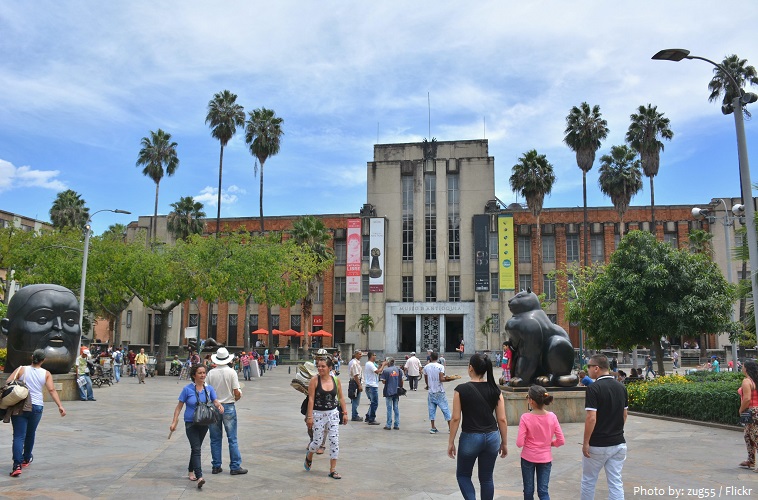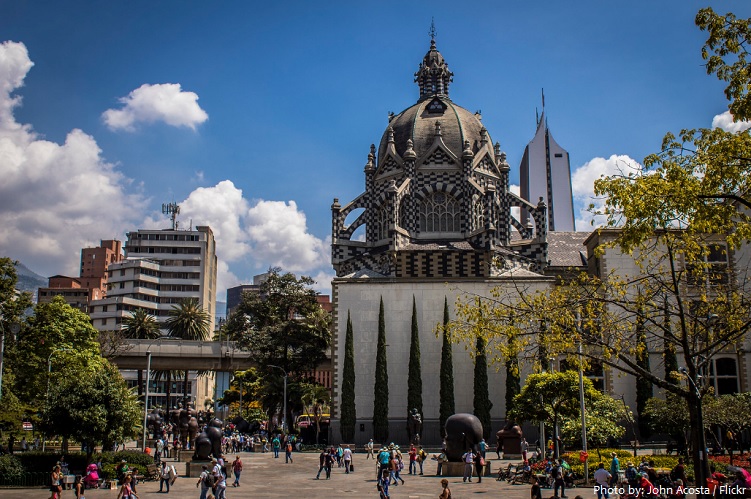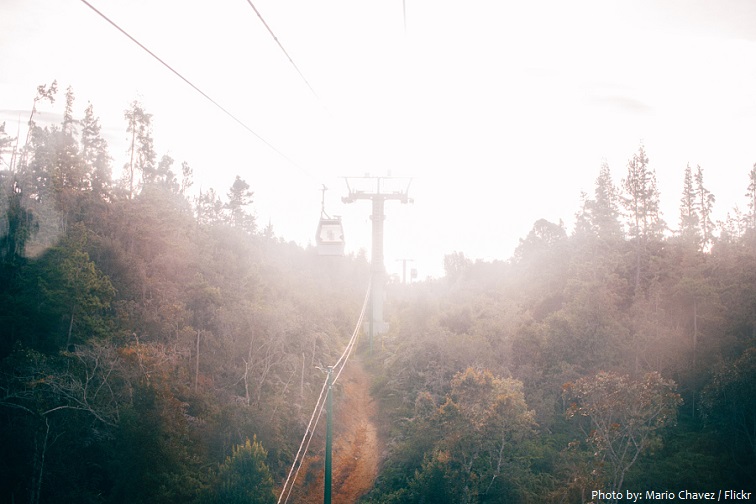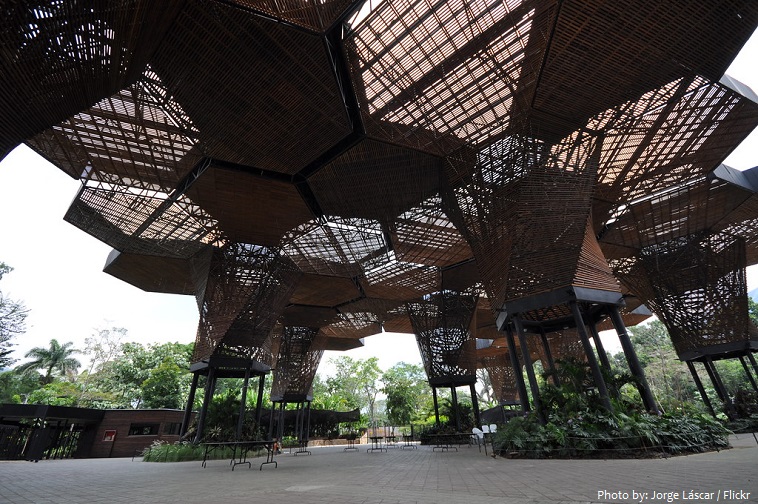Medellín is the second-largest city in Colombia.
It is located in the Aburrá Valley, a central region of the Andes Mountains in South America.
As of September 2019, the population of Medellín is about 2.5 million people.
Medellín covers a total area of 381 square kilometers (147 square miles).
The city has average elevation of 1,500 meters (4,920 feet) above sea level.
On 2 November 1675, the queen consort Mariana of Austria founded the “Town of Our Lady of Candelaria of Medellín” in the Aná region, which today corresponds to the center of the city and first describes the region as “Medellín.”
In 1826, the city was named the capital of the Department of Antioquia by the National Congress of the nascent Republic of Gran Colombia, comprised by present-day Colombia, Venezuela, Ecuador, and Panama.
After Colombia won its independence from Spain, Medellín became the capital of the Federal State of Antioquia until 1888, with the proclamation of the Colombian Constitution of 1886.
After 1914 the completion of the Panama Canal and the arrival of the railroad from Cali led to rapid growth of Medellín, which became an important transportation crossroads.
During the 19th century, Medellín was a dynamic commercial center, first exporting gold, then producing and exporting coffee.
Medellín became a center for the illegal international distribution of Colombian-grown cocaine in the late 20th century.
At the beginning of the 21st century, the city regained industrial dynamism, with the construction of the Medellín Metro commuter rail, liberalized development policies, improved security and improved education.
Today, Medellin is evolving from place troubled by social problems (guerrillas, narcos and poverty) to an innovation cluster of opportunities that appeal to local and international business alike.
Botero Plaza, surrounded by the Museum of Antioquia and the Rafael Uribe Uribe Palace of Culture, is a 7,000 square meters (75,350 square feet) outside park that displays 23 sculptures by Colombian artist Fernando Botero, who donated these and several other artworks for the museum’s renovation in 2004. The plaza is located in an area of Medellín, Colombia known as the “Old Quarter.”
The Museum of Antioquia is an art museum. It houses a large collection of works by Medellín native Fernando Botero and Pedro Nel Gómez. It was the first museum established in Antioquia department and the second in Colombia.
The Rafael Uribe Uribe Palace of Culture is a public building. It houses cultural programs related to the Department of Antioquia, such as concerts, conferences, and art exhibitions. Belgian architect Agustín Goovaerts designed the building in a Gothic Revival style. The palace was named after Rafael Uribe Uribe, a General for the Colombian Liberal Party. The Palace of Culture is today considered a National Monument of Colombia and is freely open to the public.
Parque Explora is an interactive science museum in Medellín. It is loosely modeled after San Francisco’s Exploratorium. The interactive science museum houses South America’s largest freshwater aquarium, Explora Aquarium. The museum contains over 300 interactive attractions, as well as a 3D auditorium, planetarium, television studio, and vivarium. Parque Explora opened in 2008.
Arví Park is both an ecological nature preserve and Pre-Hispanic archeological site on the eastern slopes of Aburrá Valley, in the northeast area of Medellín. The park covers several other municipalities of Antioquia, including Envigado, Bello, and Copacabana. It covers 16,000 hectares, 1,760 of which are in the state of natural forests. And it is equipped with 54 miles of walkable trails. It is a major tourist attraction, known for its wildflowers, butterflies and trails. Activities include hiking, nature tours, cycling, and outdoor adventure sports. An outdoor food market is located next to the gondola station.
The Joaquin Antonio Uribe Botanical Garden of Medellín more simply known as the Botanical Garden of Medellín, is a 14-hectare botanical garden in Medellín, Colombia. The botanical garden has 4,500 flowers and 139 recorded bird species. It has an important collection of orchids preserved in an architectural space called the “Orchideorama.”
The name “Medellín” comes from Medellín, Spain, a small village in the Badajoz province of Extremadura. The Spanish Medellín, in turn, was originally called “Metellinum” and was named after the Roman General Quintus Caecilius Metellus Pius in 75 BC who founded the village as a military base.
Medellín was once known as the most dangerous city in the world, a result of an urban war set off by the drug cartels at the end of the 1980s. As the home of the Medellín Cartel funded by Pablo Escobar, the city was a victim of the terror caused by the war between the organization headed by Escobar, and competing organizations such as “El Cartel del Valle”. However, after the death of Escobar, crime rates in the city have decreased dramatically.
Medellín was awarded 2013 “Innovative City of the Year” by the Wall Street Journal on March 1 after beating out New York City and Tel Aviv.
The weather in Medellín is warm year-round with few temperature extremes.
